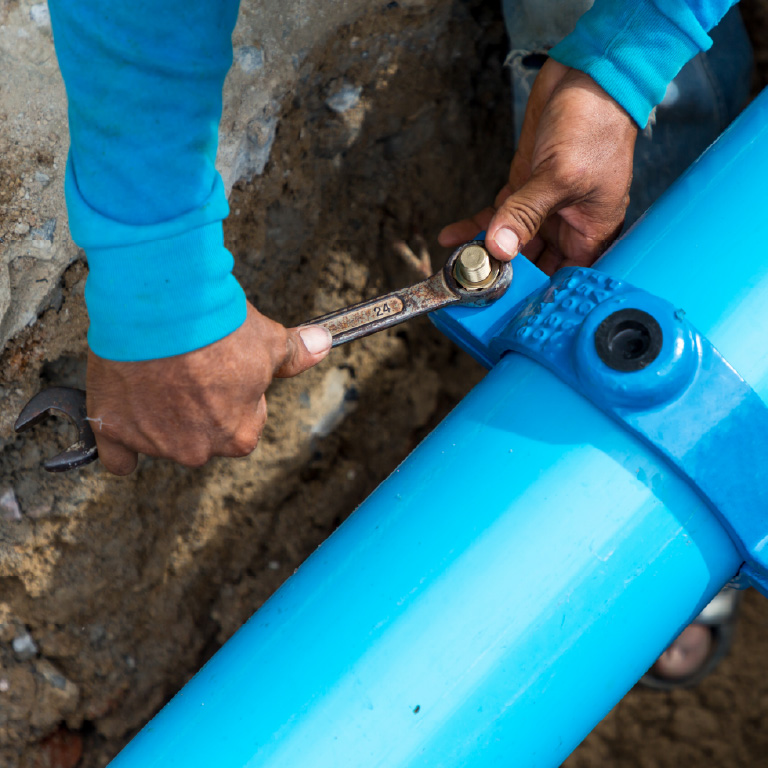One year on from the UK’s Joint Code of Practice for Escape of Water (JCoP), we look at how it is reshaping construction risk management.
Escape of water (EoW) damage is one of the most frequent and costly causes of construction claims in the UK. One example in recent years came from a failed joint in a high-rise London development that led to a £25 million insurance settlement. Beyond the immediate property damage, such incidents disrupt project timelines, increase workloads and costs, and can significantly impact companies’ financial performance, reputation, and future insurance coverage and premiums.
Understanding the risks: Why EoW persists
EoW claims in construction often stem from a combination of factors, including poor workmanship, particularly in faulty pipe joints and fittings, plumbing system failures such as corrosion and joint failures, and external influences like frozen pipes during cold weather or blocked drains causing overflow. These issues can be exacerbated in complex multi-storey buildings, where the use of plastic pipes, inadequate testing, and under par project risk management can increase vulnerability.
Strengthening defences: Water risk management standards
In response to these challenges, the UK construction industry has seen the introduction of more stringent water management requirements. A landmark development came in 2024 with the Fire Protection Association’s (FPA) publication of the first Joint Code of Practice (JCoP) on the prevention and management of escape of water on construction sites. The guide was developed by RISCAuthority and the Construction Insurance Risk Engineers Group (CIREG) and is endorsed by the London Engineering Group (LEG) and the Chartered Institute of Plumbing and Heating Engineering (CIPHE).
The JCoP aims to reduce both the frequency and severity of EoW incidents during pre-construction and construction phases. This should result in fewer insurance claims and lower costs for developers and contractors.
Best practices for water systems management
The JCoP provides best practice guidelines for managing temporary and permanent water systems within buildings. It addresses plumbing, water storage, and mechanical systems across a range of construction and refurbishment projects.
Designed to support all parties in the construction supply chain — from designers and specifiers to contractors — the guidance seeks to mitigate water damage risks and prevent project delays.
Building on and expanding the CIREG’s 2019 fifth edition guidance, Managing escape of water risk on construction sites, the JCoP introduces a broader scope and mandatory obligations, reflecting the evolving complexity of modern construction.
Construction stakeholders are expected to be aware of the JCoP guidelines and maintain compliance to prevent EoW incidents, mitigate potential claims, and contribute to smooth and timely project schedules.
Enhancements in the JCoP
The JCoP strengthens previous guidance by emphasising:
- Risk mitigation: Important measures such as isolating temporary and permanent water systems outside project hours, developing water management devices, and establishing clear emergency response procedures.
- Water management plans: Detailed requirements for water systems management plans (WSMP) and water emergency response plans (WERP).
- Standards: New standards covering design, planning, quality control, contractor selection, testing, and commissioning.
- Building methods: Specific considerations for modern methods of construction (MMC), including safe transportation and protection of modular elements, bathroom pod design and testing, and drying procedures for engineered timber.
- Compliance requirements: Introduction of a higher-risk category for mid- and high-rise buildings (five storeys or taller, or over 11 metres), which face stricter compliance obligations (Section 11 of the JCoP).
Considerations for contractors and developers
- Project threshold: The JCoP applies to construction projects with a contract value of £2.5 million or more for any single building or connected group of buildings. However, the guidance is also relevant for smaller projects and should be considered as best practice.
- Mandatory procedures: The JCoP includes compulsory procedures (prefaced with “must” and “shall”) for requirements related to quality control inspections and certificates of compliance.
- Water management: A WSMP must be developed and incorporated into the principal contractor’s management systems from the project outset.
- Mid- and high-rise buildings: Stricter controls and monitoring devices are required to manage water systems effectively.
Potential implications of the JCoP for insurers
- Application: The code applies to new projects initiated after the JCoP’s release and is not retroactive for projects currently following CIREG guidance.
- Water management plans (WMP): Insurers typically require compliance with CIREG or a robust WMP when underwriting project-specific construction insurance.
- Compliance: As of September 2025, full compliance with the JCoP code is not yet mandatory for insurers, but may become so in the future.
- Deductibles: Due to the high costs associated with EoW claims, deductibles for these risks are expected to remain high unless loss data demonstrates that recommended risk mitigation measures effectively reduce claims.
Key steps to strengthen EoW risk management
As UK construction stakeholders adopt the JCoP, contractors and developers should:
- Check whether compliance with the JCoP is a condition in their construction insurance contracts.
- Carefully review the guidance and implement aligned processes and procedures. Ideally, this should be considered as early as possible in the design phase of a project.
- Collaborate with brokers and insurers to facilitate a smooth transition toward compliance.
- Share constructive feedback on the guidance to brokers to inform future updates to the guidance.
How Marsh can help
One year on from the introduction of the JCoP, the UK construction sector is making important strides in managing EoW risks. By adopting these enhanced standards early in planning a construction project and embedding robust water management practices, stakeholders can protect their projects, reduce costly claims, and contribute to a safer, more resilient built environment.
For more insights on construction risk management and insurance, please contact your Marsh representative.
